Ff14 Where Does the Money Goes to When You Buy a Room in the Fc House
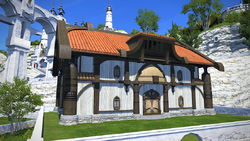
A free company house in Limsa Lominsa.
The housing system is a game feature in Final Fantasy XIV. It allows players to acquire a private estate to share with members of their free company. Patch 2.38 later allowed estates to be obtained by individuals, Patch 3.4 added apartment complexes in each ward, Patch 4.1 opened up a fourth housing zone, Shirogane, and Patch 6.1 will add a fifth housing zone in Ishgard for players to acquire their own real estate.
For free company estates, the company in question must reach Rank 6 with their patron Grand Company to be authorized land purchases. For individual buyers, a player must have at least one class at level 50 and have a rank of Second Lieutenant within their Grand Company. In either case, once the requirements are met, players can buy an empty plot of land by examining the placard. Plots come in small, medium, and large sizes.
After purchasing a plot of land in one of the available residential districts, players can build an estate hall once they acquire a construction permit. The hall's exterior can be customized by selecting from a variety of roofs, exterior walls, windows, and doors. The player can also remodel the interior with everything from wallpaper to ceiling lights, and add a personal touch with a variety of furnishings and ornaments. Players may also install garden beds, summoning bells for Retainers, an aetheryte crystal, and a chocobo stable.
Contents
- 1 Zoning and wards
- 2 Types of houses
- 3 Features
- 3.1 Access control
- 3.2 Personal chambers
- 3.3 Workshops
- 3.4 Gardening
- 3.5 Chocobo stable
- 3.6 Orchestrion
- 3.7 Aquariums
- 3.8 Vendors
- 3.9 Lighting
- 3.10 Storerooms
- 4 Reclamation
- 5 Relocation
- 6 Musical themes
- 7 Gallery
Zoning and wards [ ]
Housing is restricted to one of four zones: The Mists in La Noscea, The Lavender Beds in The Black Shroud, The Goblet in Thanalan, and Shirogane in Hingashi. For zoning purposes, each of the residential districts are instanced into several identical wards each containing plots of land. As of Patch 5.4, there are twenty-four wards per housing zone per server. Each ward also contains a subdivision with additional plots of land. A ward or subdivision contains 30 plots each, for a total of 5,760 plots per server.
When entering the residential zones, a player must choose which ward to enter from a drop-down list (those with housing have an option to go directly to theirs). A list of every plot can be reviewed, with its ownership status listed.
Types of houses [ ]
Houses come in a variety of styles, depending on zone, plot size, and construction style. Default housing walls for the zones of The Lavender Beds, The Goblet, and The Mists include Glade, Oasis, and Riviera respectively, each with the options of construction styles being Wood, Composite, or Stone; however, for the zone Shirogane, the default housing style is Hingan with the styles of Mokuzo, Nanpu, and Kura-zukuri. Additional exterior styles may be created through company workshops, with the following themes: "Arms Supplier", "Eatery", "Merchant", "Outfitter", "Moogle", "Chocobo", "Paissa", "Carbuncle", "Shirogane Castle", "Odder Otter", "Trader", "Half-Timbered", "Smithy", and "Florist". With the release of the Shadowbringers expansion (Patch 5.0), restrictions on housing exteriors (Ex. Oasis Exterior) being tied to a specific housing zone (Ex. The Goblet) have been lifted to where any of the default housing walls can be used at any zone.
Houses come in three sizes, based on plot of land: cottage (small), house (medium), and mansion (large). Larger sizes allow more furnishings and decorations.
In addition to the above, each ward has an apartment building with a capacity of 90 per ward (for a total of 17,280 apartments per server). Like private estates and private chambers, players must have at least one job at level 50 or higher and reach Second Lieutenant rank to purchase one. Apartments have a fee of 500,000 gil.
Features [ ]
Access control [ ]
A Free Company leader or private home-owner may set guest access rules. For company estates, the Free Company member settings can control which features of the estate may be authorized for use.
Private owners may set guest-access to their estate hall. Starting with Patch 3.1, Estate Sharing allows up to two players on the owner's Friend List to become "tenants", having increased access rights (e.g. placing furnishing or using stables) on a private estate. Note that players can only be tenants of up to two estates.
Personal chambers [ ]
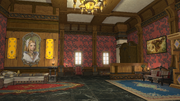
A personal chamber.
Since patch 2.3, the players have been allowed to have their own personal chambers inside their Free Company estate. Each chamber costs 300,000 gil. Like private housing, players must be Second Lieutenant with at least level 50 in one class to obtain a private chamber.
All private chambers have the same size and layout, and permit up to 100 pieces of furniture installed.
Workshops [ ]

Company Workshop.
Starting with 3.0, a Free Company estate can have a workshop installed. These workshops enable the use of Company Crafting --a system which allows the creation of airship parts, submarine parts, housing schematics, and aetherial wheels-- as well as a control over airships or submarines managed by the Free Company.
Gardening [ ]
Garden beds can be placed as an outdoor furnishing. Players may grow and cultivate various crops in these patches. To start gardening, a seed (obtained from botany or certain merchants) and topsoil (obtained from mining) must be placed in the desired patch. The type of soil can affect how the plants grow, and it can tended using fertilizer and watering.
The types of plants grown include not only most flora obtained from Botany, but also greens used in Chocobo Raising. Plants in adjacent patches may occasionally lead to inter-crossing crops, sometimes yielding seeds not found anywhere else.
Free company leaders can control what member ranks are authorized to tend to gardens.
Chocobo stable [ ]
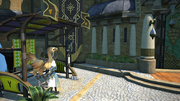
Chocobo Stables.
A chocobo stable can be placed outside player houses. This stable allows free company members to raise their Company Chocobo by training it for battle, feeding snacks to alter their feather pigmentation, or changing its name. Stabled chocobos cannot be summoned into the field, and must be fetched to use again. Over time, the stable may get dirty, and must be cleaned using Magicked Stable Brooms. In addition, each apartment complex contains a public stable for its tenants.
A training session requires the use of a suitable green such as Krakka Roots. It consists of a short cutscene montage and awards the chocobo EXP (depending on how clean the stable is). The chocobo must then rest for one hour (real-time). It is possible to train other free company members' chocobos, depending on authorization set by company management.
Stabled chocobos can also be fed fruit snacks to change its feather pigmentation. These colors can be altered on an RGB scale, and may be shifted into any of the dye colors available for equipment (with "Desert Yellow" as the default color). Once a successful change is induced, a message will state it has begun to grow new feathers, and must remain stabled for six hours (real-time) to fully grow in the new plumage. Only the chocobo's owner may alter the plumage.
Orchestrion [ ]
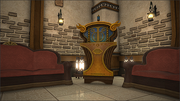
Orchestrion.
Players may install a Orchestrion within an estate, private chamber, or apartment. The Orchestrion will play in-game music from Orchestrion Rolls. Starting with Patch 3.4, a playlist function was added to allow it to cycle through tracks.
Note that for technical reasons, the Orchestrions plays music as a 3D sound effect, so the audio quality will slightly vary depending on one's position relative to the music box.
Aquariums [ ]
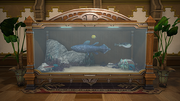
An aquarium.
Introduced in Patch 3.4, Aquariums can be installed to display certain types of fish gathered by Fishers. Aquariums must first be filled with either freshwater or saltwater, and may optionally place an accessory for decor. The type of fish that can be placed depends on the water installed, so for obvious reasons freshwater and saltwater fish cannot be placed in the same aquarium. The Aquarium system does not currently support the display of fish caught in sand dunes, open skies, clouds, magma, aetherochemical spills, oceans, and salt lakes.
Aquariums have up to four tier sizes, affecting their total capacity. However, fish also comes in four tiers of sizes, with larger fish taking more space.
Only one aquarium may be installed per estate, private chamber, or apartment.
Vendors [ ]
Vendors can be installed around the estate with appropriate permits. With the appropriate permit, NPCs such Material Suppliers, Menders, Junkmongers, or Materia Melders. For private estate, a Steward may be hired. It is also possible to have a retainer peddle market goods on an estate lawn (this will not affect their normal activities).
These vendors can also be found in the lobby of apartment complexes.
Lighting [ ]
As of Patch 3.1, the ambient interior lighting of estates can be adjusted by players from a scale of 0-5.
Storerooms [ ]
With Patch 4.1, unused furniture can be put into estate storage. The number of items held in storerooms is identical to amount of furnishings that may be placed.
Reclamation [ ]
As of Patch 3.1, estate reclamation has been implemented. To ensure that plots of land are not claimed and left unused, estates not accessed for extended periods of time are automatically demolished, and the plots of land will be put back up for sale.
Any free company estate or private estate left unused for more than 45 days will be demolished. Notifications will be sent to the owner and/or free company members as the time draws near. This process is halted if the house is used once again. Tenants of private estates cannot stop this process; the home owner themselves must use it.
If the estate is demolished, certain furniture and 80% of the price paid on the plot of land can be reimbursed by the district's Residential Caretaker (for up to 35 days following demolishing). Construction permits, fixtures, some types of furniture, private chambers, and company workshops (including airships) are permanently lost.
Relocation [ ]
Patch 4.1 introduced a relocation function, which allows estates to be quickly moved to a new available plot in any district or ward. The cost of relocation to the new plot will be discounted by 30% of the minimum value of your old plot to the price of the new one. If the reimbursement exceeds the price of the new plot, you will not have pay any fee (but will not get the remainder in gil).
Internal furnishings and most external furnishings will be placed in storage, and must be redecorated by the homeowners after relocation. Exterior fixtures we be altered to match the architectural style of the new district (specialty fixtures made by Company Crafting are retained). Interior fixtures will be retained after transfer. Note that if moving from a larger estate to a smaller one, some furnishings and fixtures may be lost. All private chambers, company airships, chocobo stables, gardens, and other settings will be retained during the transfer.
Upon finalizing the relocation, the old plot will be released for sale to other players.
Musical themes [ ]
"Where the Heart Is" plays in residential districts at night while "Where the Hearth Is" plays during the night.
Gallery [ ]

Concept art.
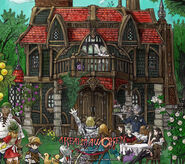
Concept art.

Concept art.
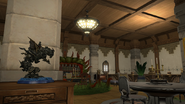
House interior.


The Goblet housing area in Ul'dah.
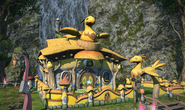
A Chocobo-themed residence.
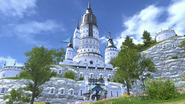
The Topmast apartment complex.
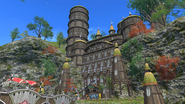
Lily Hills apartment complex.
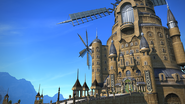
The Sultana's Breath apartment complex.
Ff14 Where Does the Money Goes to When You Buy a Room in the Fc House
Source: https://finalfantasy.fandom.com/wiki/Housing



0 Response to "Ff14 Where Does the Money Goes to When You Buy a Room in the Fc House"
Post a Comment